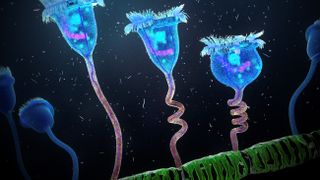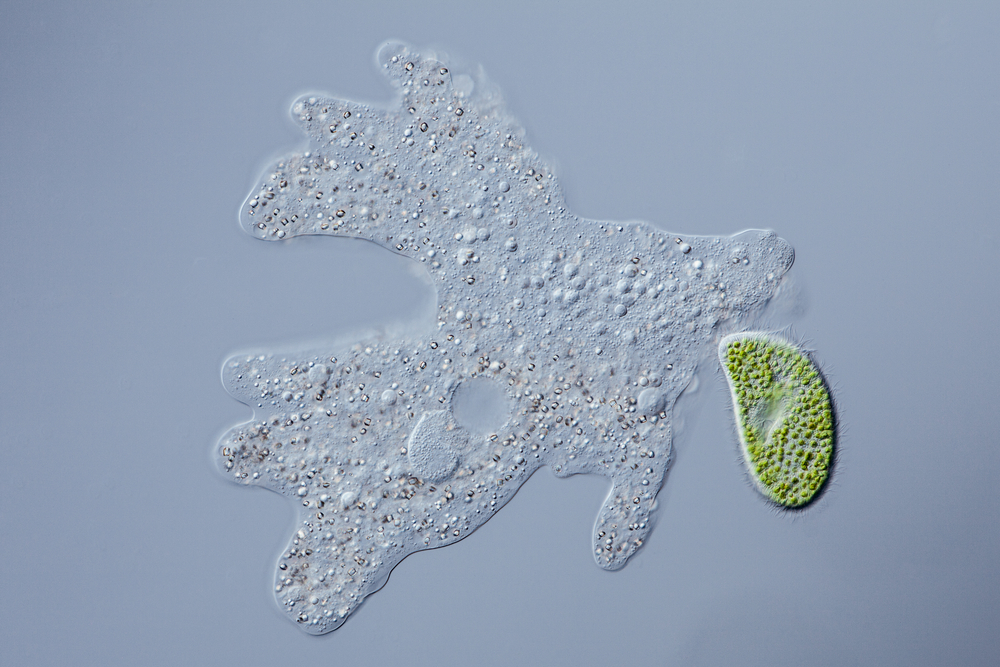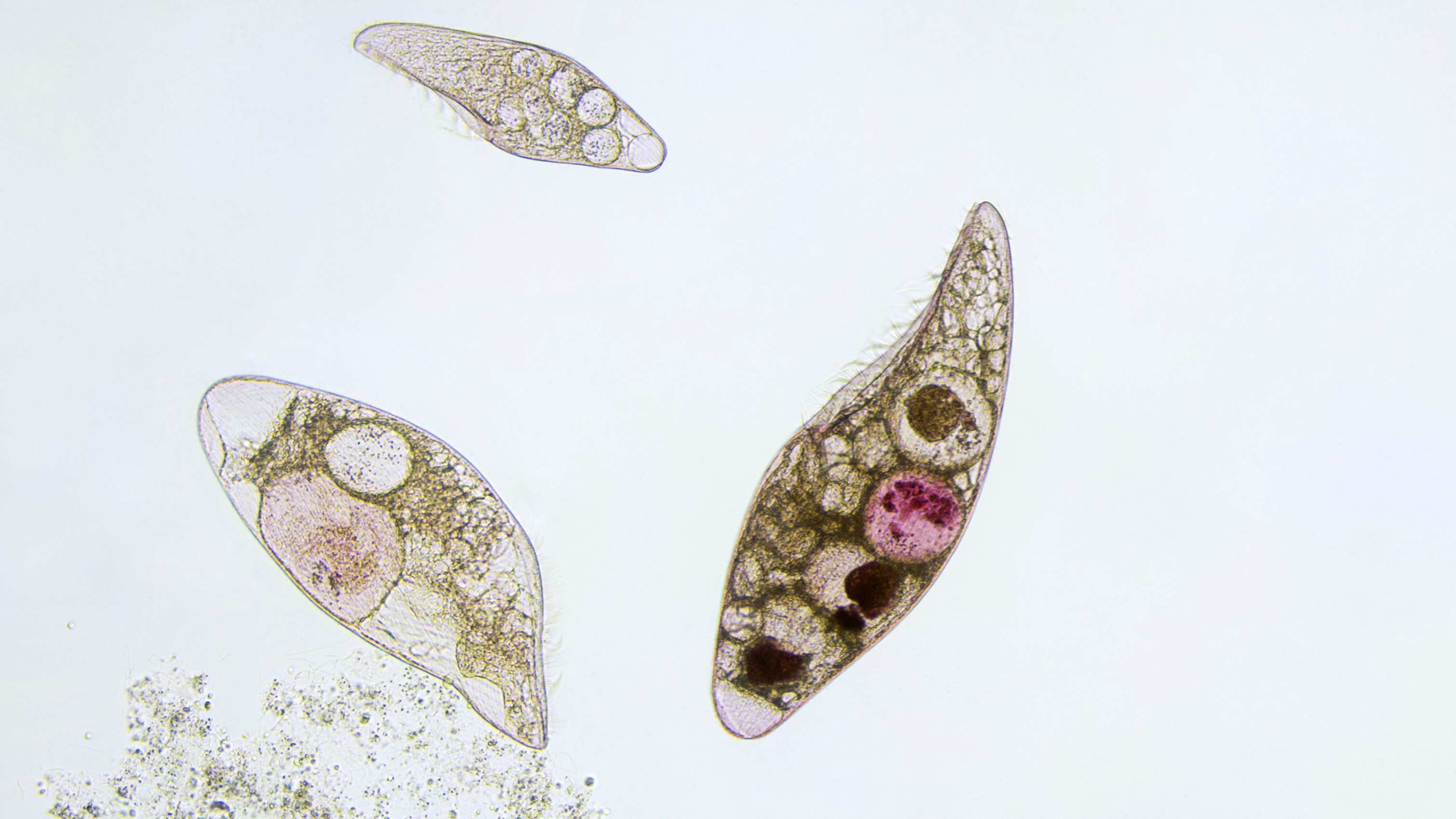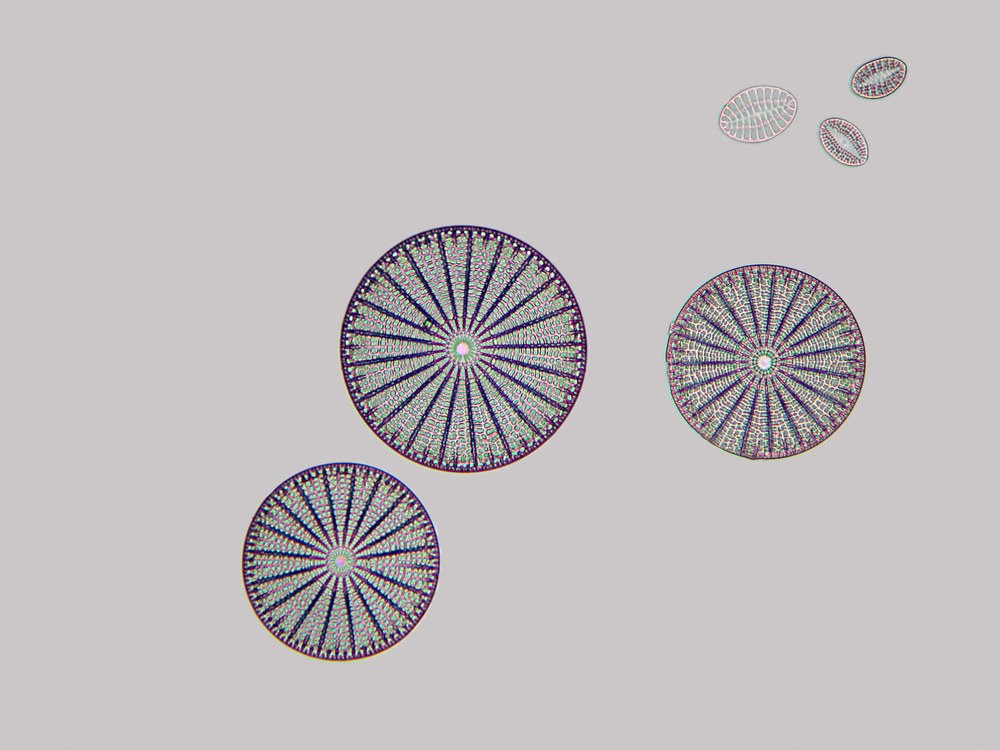Which Protist Is Both Plant And Animal Like
What are protists?

Protists are a diverse drove of organisms that do non fit into animal, plant, bacteria or fungi groups. While exceptions be, they are primarily microscopic and fabricated up of a unmarried cell (unicellular), co-ordinate to the educational website CK-12.
Protists are eukaryotes equally they possess a nucleus and other membrane-bound organelles (structures that perform a specific task).
At one time, unproblematic organisms such equally amoebas and single-celled algae were classified together in a single taxonomic category: the kingdom Protista. However, the emergence of amend genetic information has since led to a clearer understanding of evolutionary relationships among different groups of protists, and this classification system was rendered defunct. Agreement protists and their evolutionary history continues to be a matter of scientific discovery and discussion.
Characteristics of protists
All living organisms can be broadly divided into two groups — prokaryotes and eukaryotes — which are distinguished by the relative complication of their cells. In contrast to prokaryotic cells, eukaryotic cells are highly organized. Leaner and archaea are prokaryotes, while all other living organisms — protists, plants, animals and fungi — are eukaryotes, co-ordinate to the educational website tutors.com.
Many various organisms including algae, amoebas, ciliates (such every bit paramecium) fit the general moniker of protist. "The simplest definition is that protists are all the eukaryotic organisms that are not animals, plants or fungi," said Alastair Simpson, a professor in the department of biology at Dalhousie University. The vast bulk of protists are unicellular or grade colonies consisting of i or a couple of distinct kinds of cells, co-ordinate to Simpson. He farther explained that there are examples of multicellular protists among brown algae and sure red algae.
Protist cells
Similar all eukaryotic cells, protists have a characteristic fundamental compartment called the nucleus, which houses their genetic material. They also have specialized cellular machinery chosen organelles that execute divers functions within the jail cell. Photosynthetic protists such as the various types of algae contain plastids. These organelles serve as the site of photosynthesis (the process of harvesting sunlight to produce nutrients in the form of carbohydrates). The plastids of some protists are like to those of plants. According to Simpson, other protists have plastids that differ in the color, the repertoire of photosynthetic pigments and fifty-fifty the number of membranes that enclose the organelle, equally in the example of diatoms and dinoflagellates, which constitute phytoplankton in the ocean.
Most protists have mitochondria, the organelle which generates energy for cells to use. The exceptions are some protists that live in anoxic conditions, or environments lacking in oxygen, according to Astrobiology at NASA. They use an organelle called the hydrogenosome (which is a greatly modified version of mitochondria) for some of their energy product. For instance, the sexually transmitted parasite Trichomonas vaginalis, which infects the human vagina and causes trichomoniasis, contains hydrogenosomes.
Related: Robert Hooke: English scientist who discovered the prison cell
Protist feeding habits

Protists proceeds diet in a number of ways. According to Simpson, protists can exist photosynthetic or heterotrophs (organisms that seek exterior sources of food in the class of organic material). In turn, heterotrophic protists fall into two categories: phagotrophs and osmotrophs. Phagotrophs employ their cell body to environment and consume up food, frequently other cells, while osmotrophs blot nutrients from the surrounding environment. "Quite a few of the photosynthetic forms are also phagotrophic," Simpson told Alive Science. "This is probably truthful of virtually 'algal' dinoflagellates for example. They have their ain plastids, simply will also happily eat other organisms." Such organisms are called mixotrophs, reflecting the mixed nature of their nutritional habits.
Protist reproduction
Most protists reproduce primarily through asexual mechanisms according to Simpson. This can include binary fission, where a parent cell splits into 2 identical cells or multiple fission, where the parent cell gives rise to multiple identical cells. Simpson added that nearly protists probably likewise have some kind of sexual bicycle, withal, this is simply well documented in some groups.
Classification: from Protozoa to Protista and beyond
The classification history of protists traces our understanding of these various organisms. Often complex, the long history of protist classification introduced two terms, even so used today, into the scientific dictionary: protozoa and protists. However, the significant of these terms has also evolved over fourth dimension.
The appreciable living world was once neatly divided between plants and animals. Just the discovery of various microscopic organisms (including what nosotros now know as protists and leaner) brought forth the need to understand what they were, and where they fit taxonomically.
The commencement instinct of scientists was to relate these organisms to plants and animals by relying on morphological characteristics. The term protozoan (plural: protozoa or protozoans), significant "early animals," was introduced in 1820 by naturalist Georg A. Goldfuss, according to a 1999 article published in the periodical International Microbiology. This term was used to depict a collection of organisms including ciliates and corals. By 1845, Protozoa was established as a phylum or subset of the creature kingdom by German scientist Carl Theodor von Seibold. This phylum included sure ciliates and amoebas, which were described by von Seibold as single-celled animals. In 1860, the concept of protozoans was further refined and they were elevated to the level of a taxonomic kingdom by paleontologist Richard Owen. The members of this Kingdom Protozoa, in Owen's view, had characteristics common to both plants and animals.

Though the scientific rationale backside each of these classifications implied that protozoans were rudimentary versions of plants and animals, there was no scientific bear witness of the evolutionary relationships between these organisms (International Microbiology, 1999). According to Simpson, present "protozoa" is a term of convenience used in reference to a subset of protists, and is not a taxonomic group. "In order to be called a protozoan, they [protists] have to exist non-photosynthetic and not very fungus-like," Simpson told Live Science.
The term protista, pregnant "the showtime of all or primordial" was introduced in 1866 past German language scientist Ernst Haeckel. He suggested Protista as a third taxonomic kingdom, in addition to Plantae and Animalia, consisting of all "archaic forms" of organisms, including bacteria (International Microbiology, 1999).
Since then, the kingdom Protista has been refined and redefined many times. Different organisms moved in and out (notably, bacteria moved into a taxonomic kingdom of their ain). American scientist John Corliss proposed 1 of the mod iterations of Protista in the 1980s. His version included the multicellular cherry and brownish algae, which are considered to be protists even today.
Scientists, ofttimes concurrently, have debated kingdom names and which organisms were eligible (for example, versions of yet some other kingdom, Protoctista had been proposed over the years). However, it is of import to note the lack of correlation betwixt taxonomy and evolutionary relationships in these groupings. Co-ordinate to Simpson, these groupings were not monophyletic, meaning that they did not represent a single, whole branch of the tree of life; that is, an ancestor and all of its descendants.
Today's classification has shifted away from a system congenital on morphology to one based on genetic similarities and differences. The result is a family unit tree of sorts, mapping out evolutionary relationships between various organisms. In this system, there are iii principal branches or "domains" of life: Bacteria, Archaea (both prokaryotic) and Eukarya (the eukaryotes).

Within the eukaryotic domain, the protists are no longer a unmarried group. They have been redistributed amid different branches of the family tree. Co-ordinate to Simpson, we at present know most of the evolutionary relationships amongst protists, and these are often counterintuitive. He cited the example of dinoflagellate algae, which are more closely related to the malaria parasite than they are to diatoms (another group of algae) or even to country plants.
Still, in that location are pressing questions that remain. "We simply don't know what the earliest split was among the lineages that led to living eukaryotes," Simpson told Alive Science. This point is chosen the "root" of the eukaryotic tree of life. Pinpointing the root will cement the understanding of eukaryotic origins and their subsequent evolution. As writer Tom Williams said in a 2014 article published in the journal Current Biological science, "For the eukaryotic tree, the root position is critical for identifying the genes and traits that may have been present in the ancestral eukaryote, for tracing the evolution of these traits throughout the eukaryotic radiations, and for establishing the deep relationships among the major eukaryotic groups."
The importance of protists
are responsible for a variety of homo diseases including malaria, sleeping sickness, amoebic dysentery and trichomoniasis. Malaria in humans is a devastating disease. It is caused past five species of the parasite Plasmodium, which are transmitted to humans by female Anopheles mosquitoes, co-ordinate to the Centers for Disease Control and Prevention (CDC). The species Plasmodium falciparum infects cherry-red claret cells, multiplies rapidly and destroys them. Infection tin as well crusade red blood cells to stick to the walls of small blood vessels. This creates a potentially fatal complication called cerebral malaria (according to the CDC).
The World Health Organization (WHO) states that Plasmodium falciparum is the most prevalent and lethal to humans. According to their recent malaria fact sail, in 2020 there were an estimated 627,000 deaths due to malaria in the earth, the majority of which (90 percent) occurred in Africa. Sure strides have been made in reducing the rates of incidence (occurrence of new cases) and mortality rates in role by supplying insecticide-treated mosquito nets, spraying for mosquitoes and improving diagnostics. According to the WHO "In 2020, 26 countries reported fewer than 100 ethnic cases of the affliction, up from half-dozen countries in 2000".The WHO has a goal of eliminating malaria in at least 35 countries past 2030.
Protists also play an important function in the surroundings. According to CK-12, plant-like protists produce almost half of the oxygen on World through photosynthesis. Protists act as decomposers and aid in recycling nutrients through ecosystems, according to the educational website Biology Online. In add-on, protists in various aquatic environments, including the open water, waterworks and sewage disposal systems feed upon, and control bacterial populations "If you took all the protists out of the globe, the ecosystem would collapse really quickly," Simpson said.
Additional resources
If you would similar to acquire more most protists check out this informative lesson on the educational website Study.com, y'all can even take a quiz at the end to test your cognition. Read more most how protists are beneficial to humans in this article from the science news site AllThingsNature. If yous're still wanting more, head over to the educational website Lumen Learning for fifty-fifty more protist content.
Bibliography
- Caron, David A. "Towards a molecular taxonomy for protists: benefits, risks, and applications in plankton ecology." Journal of Eukaryotic Microbiology threescore.4 (2013): 407-413.
- Xiong, Wu, et al. "Soil protist communities form a dynamic hub in the soil microbiome." The ISME Periodical 12.2 (2018): 634-638.
- Foissner, Wilhelm. "Protist diversity and distribution: some basic considerations." Protist diversity and geographical distribution. Springer, Dordrecht, 2007. i-8.
Source: https://www.livescience.com/54242-protists.html
Posted by: mercierwhitu1954.blogspot.com

0 Response to "Which Protist Is Both Plant And Animal Like"
Post a Comment